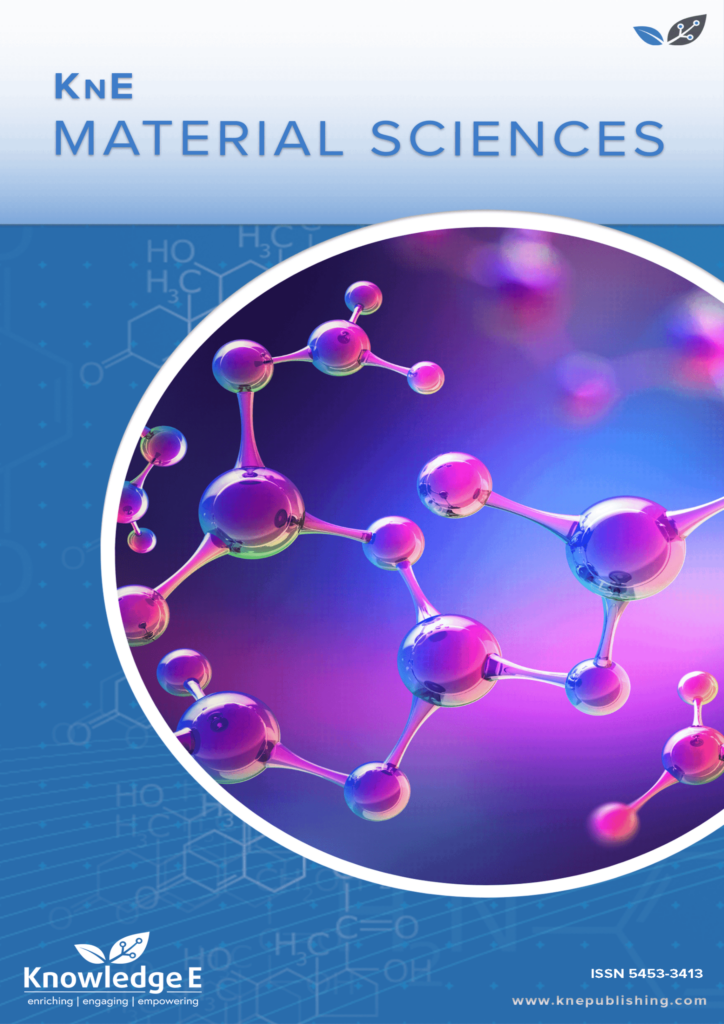
KnE Material Sciences
ISSN: 2519-1438
The latest conference proceedings on physical materials, energy materials, electrical materials.
Features of Cells Integration on TiNi-based Porous Scaffold
Published date:Jul 17 2017
Journal Title: KnE Material Sciences
Issue title: Shape Memory Biomaterials and Implants in Medicine (SMBIM)
Pages:72-79
Authors:
Abstract:
Developing of standard population of cells — line fibroblasts 3T3 in porous structure of incubator having fixed composition, porousness and pore size distribution has been studied. The volume of scaffold space was shown to determine the potential cell division and its function. The characteristic integration of fibroblasts in porous incubators from TiNi-based alloy having different volumes was analyzed. The relation of colonization by cells and growth of tissues in porous samples from titanium nickel depending on depth of penetration is determined.
References:
[1] D. Logeart-Avramoglou, F. Anagnostou, R. Bizios, H. Petite, Engineering bone: challenges and obstacles J. Cell. Mol. Med. 9(10) (2005) 72-84.
[2] J.A. Stella, A. D’Amore, W.R. Wagner, M.S. Sacks, On the biomechanical function of scaffolds for engineering loadbearing soft tissues. Acta Biomater. 6(7) (2010) 2365–2381.
[3] G. Chen, T. Ushida, T. Tateish, Scaffold design for tissue engineering. Macromol Bioscience. 2 (2002) 67–77.
[4] V.A. Surguchenko, A.S. Ponomareva, L.A. Kirsanova, N.N. Skaleckij, V.I. Sevastianov. The cell-engineered construct of cartilage on the basis of biopolymer hydrogel matrix and human adipose tissue-derived mesenchymal stromal cells (in vitro study). J. Biomed. Mater. Research [In Russian] 2015; 103A (2): 463–470.
[5] C.J. Bettinger, J.P. Bruggeman, A. Misra et al, Biocompatibility of biodegradable semiconducting melanin fi lms for nerve tissue engineering. Biomaterials. 30(17) (2009) 3050-3057.
[6] S. Mitragotri, J. Lahann, Physical approaches to biomaterial design. Nature Mater. 8 (2009) 15-23.
[7] C. M. Murphy, M. G. Haugh, F J. O'Brien, Understanding the effect of mean pore size on cell activity in collagenglycosaminoglycan scaffolds. Cell Adhesion & Migration. 4(3) (2010) 377-381.
[8] F.J. O'Brien, B.A. Harley, I.V. Yannas et al, The effect of pore size on cell adgesion in collagen-GAG scaffolds. Biomaterials. 26(4) (2005) 433-441.
[9] M. Peroglio, C. Gremillard, C. Gauthier et al, Bioactive glass scaffolds for bone tissue engineering: state of the art and future perspectives. Acta Biomater. 31(7) (2010) 4369-4377.
[10] V.E Gunther, V.N. Khodorenko, T.L. Chekalkin et al, Medical materials with shape memory. Medical Materials and Implants with Shape Memory / Ed. VE Gunther. - Tomsk: Publishing house "NPP MIC" [in Russian]. T.1 (2011) 534.
[11] O. V. Kokorev, G. Ts. Dambaev, V. N. Khodorenko, V. E.Gunther, Usage porous-penetrable titanium nikilide incubators as cells culture carriers. Genes & Cells. 5 (4), (2010) 31-37.
[12] V. E. Gunther, G. Ts. Dambaev, V. N. Khodorenko, et al, RF Patent N 2191607, 30, 27. (2002).
[13] G. Ts. Dambaev, V. E. Gunther, V. N. Khodorenko, et al, RF Patent N 2143867, 1, 10. (2000).
[14] O.V. Kokorev, V. N. Hodorenko, V. E. Gunther et al,Porous TiNi-based alloy scaffold for cell tissue engineering. J Adv Sci Res. 5(3) (2014) 01–06.
[15] O.V. Kokorev, V. N. Hodorenko, T. L. Chekalkin, G. Ts. Dambaev; V. E. Gunther, In vitro and in vivo evaluation of porous TiNi-based alloy as a scaffold for cell tissue engineering. Artif. Cells Nanomed. Biotechnol. (2014) 1–6.